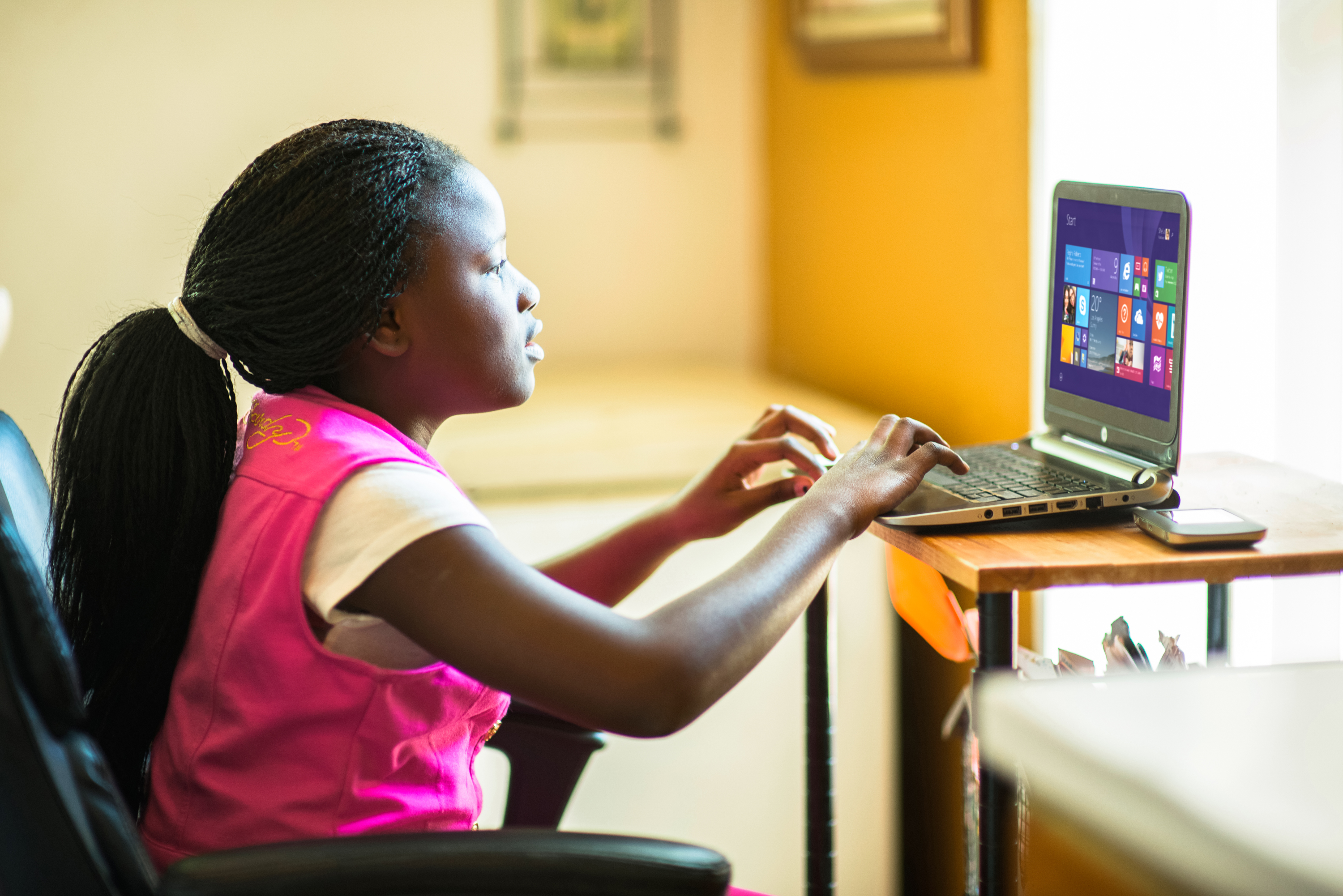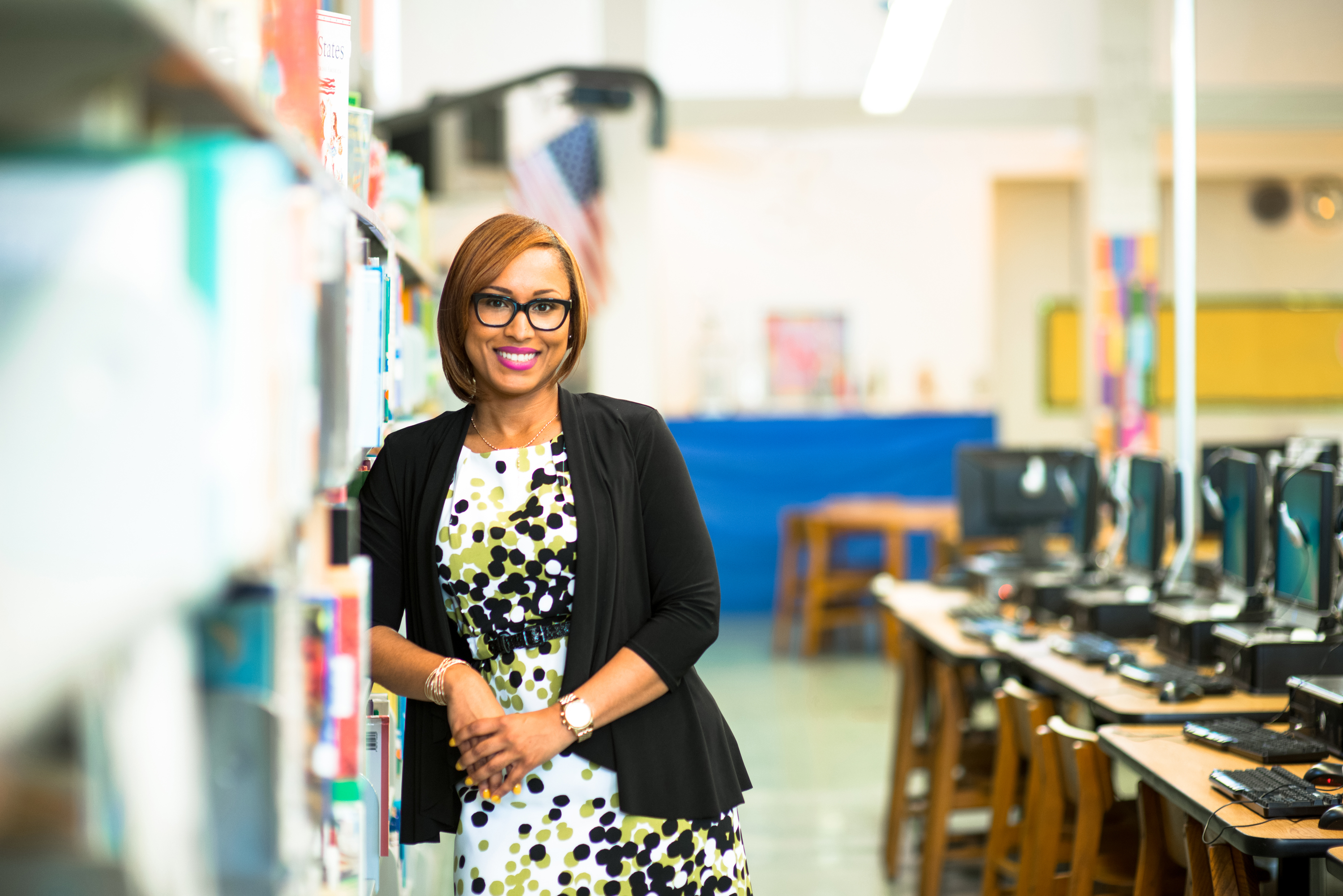
Miami-Dade schools provide Windows devices to help boost kids’ learning, brighten futures
On the weekends, Tyesha and Iesha Heard, twin 12-year-old girls, open their laptops as soon as they finish breakfast. The girls’ grandmother, Tammy Heard, isn’t worried about too much screen time. For those raising children in impoverished parts of Miami-Dade County, these devices are changing the way children are learning. They’re also seen as a gift.
“It was a blessing,” says Heard, who is raising the girls. “I appreciate it very much. I couldn’t afford to buy them laptops on my own.”
Tyesha and Iesha are just two students among thousands now using computers both in the classroom and at home. This is the first year students at Liberty City Elementary School have received new Windows 8 touch screen devices running the latest version of Office 365 as well as educational applications aligned with the school curriculum. Miami-Dade County Public Schools is the fourth largest school district in the country, with a high number of low-income and ESL students. During the 2013-14 school year, 78.5 percent of elementary students in the district received free or reduced-cost lunch.
In an effort to close the opportunity gap through technology use, Superintendent Alberto Carvalho has introduced a number of digital initiatives. In June 2013, the school district approved a plan to spend $63 million to equip up to 150,000 students with laptops or tablets.
While it’s too soon to interpret results, it is becoming clear that the use of technology in the classroom — and now in the home — is closing the gap between students at Liberty City.
Tyesha and Iesha, who were below grade level, are seeing their grades improve. Their reading abilities have jumped with the help of a story-reading educational app. Laptops are useful for downloading ebooks, too, especially for students who don’t have the opportunity to go to the library.

Most of all, Tyesha and Iesha — along with many of their peers — are engaged in learning.
“For me, it’s better on the laptop than on paper because they didn’t understand it on paper,” says Tammy Heard of the lessons. “It’s exciting to them when they get it right. You can see it in their face and their eyes.”
However, two problems became evident early on: First, for children in high-crime neighborhoods, walking around with a computer was risky. Also, many students didn’t have Internet access at home. So a program was introduced to lease the devices at low cost so kids could keep them at home for the duration of their schooling, and the national nonprofit Everyone On has helped bring low-cost Internet service to unconnected households across America.
The school district took advantage of Microsoft’s Office 365 Education E1 plan, which allows qualified academic institutions to receive Office 365 at no cost. And, with the Office ProPlus plan, all students have access to Office 365 while at school and the option to download up to five additional versions of Office for use on home computers, tablets or mobile phones with access no matter what operating system they use.
“We don’t take (the laptop) anywhere,” says Heard. “After they finish with it, I put it in a safe place. I hope that every kid that has one understands that it was a gift and utilizes it. It’s a gift to the parents who can’t afford it, to give the kids an education.”
Carvalho is something of a superhero in the education world and a sought-after forward thinker who was invited to discussions about education transformation at the White House a number of times. He has turned Miami-Dade around since his appointment as superintendent in 2008. He was named Superintendent of the Year in 2014, a national award, and under his leadership, WalletHub named Miami the U.S. city with the most efficient education spending in January.
During his tenure, Carvalho has restructured struggling schools, opened and instated himself as principal of the innovative iPrep Academy, created strategic partnerships with companies like Pearson and Microsoft and introduced a comprehensive technology plan for the district — all as a way to close the opportunity gap between students from different economic backgrounds. Armed with the knowledge that future schools and workplaces require technical literacy — particularly fluency in Microsoft Office 365 — the district started with identifying the schools most in need of resources.
Liberty City was one of those schools. It is one of Florida’s 300 lowest-performing schools and was selected to be one of the first schools for Carvalho’s one-to-one computing initiative.

Miami-Dade decided to make the investment in modern Windows devices because school leaders recognized the role technology played in helping students learn now and prepare for their futures. “We knew this could be the boost we need,” says Shante Thompson, assistant principal at Liberty City. Closing the technology gap is especially important as Florida assessment standards change and computer literacy plays a larger role in those tests.
“Most of our parents do not have college degrees, and some of them may not have high school diplomas,” says Thompson, adding that some parents “are not able to support kids at home.” Low-performing schools are typically in areas deemed unsafe, she explains. In Broward County, students were reportedly having their devices stolen while bringing them to and from school.
Now with devices of their own, this year Liberty City students have been able to go home at night to continue using the technology they’re working with in the classroom on laptops equipped with Office, educational apps and study games.
Thanks to the additional technology and resources, Thompson says she can already see the learning gap closing.
For Tyra Griffin, a fifth-grade math and science teacher, a big part of closing the gap is due to an increased sense of responsibility among the children.
“The first thing I noticed was a sense of ownership,” says Griffin. “Most of our kids come from a multi-child home. You have to share everything. Parents can’t buy a laptop for each child.”
Simply giving the students devices of their own has pushed them to rise to the occasion.
“I’ve seen tremendous improvements,” Griffin says. “In addition and multiplication, I’ve seen better classroom performance.”
Students are acting out less and participating more. “When they have the confidence they’ll even take risks,” she says.
One of Griffin’s students is an 11-year-old boy who has taken her class twice. “He was struggling a lot with math,” she says. “That was one of his weakest areas. I’ve seen him increase in his classroom performance. His aptitude level has changed. I can see that light bulb has clicked. He’s shining bright right now.”

Griffin has high hopes that technology in the classroom will be the key to this student’s success in the future.
The students aren’t the only ones learning in the classroom. Teachers and administrators have undergone training to implement technology, and they’ve adjusted their approaches to motivating the students.
To keep the students striving, Liberty City implemented goals, challenges and a rewards program. For instance, if a student answers 500 math questions in a week, he or she will earn a prize provided by local organizations and churches that have partnered with the school. The kids like it so much, Griffin says she ups the stakes every week.
“They not only compete against each other, but they compete against other classes in the school and against other schools,” Griffin says. “Their confidence level is so high, I just keep building and building. I remind them, ‘look how well you’re doing, there’s no class that can touch you.’ Once you build that confidence, you can get so much out of them.”
“Some of our kids have been born into a stressful situation,” explains Thompson. “They’ve never seen success.”
For Phyllis Richberg, who is raising her 10-year-old grandson, Chris, along with his brothers, ages 6 and 7, having a laptop in the home and technology in the classroom have been revolutionary.
Richberg believes the next generation, equipped with digital know-how, will go further in life and have the entire world at their fingertips.
“They need to be taught how to do things on the computer,” she says.
She says Chris is teaching his younger brothers how to solve problems on the computer now, too.
“Even the hard ones!” Chris chimes in.
“It makes them want to learn,” Richberg says. “It makes it interesting for them.”
Lead photo: Iesha (left) and Tyesha Heard do their homework on their laptops. Photos by Ivan Nava














